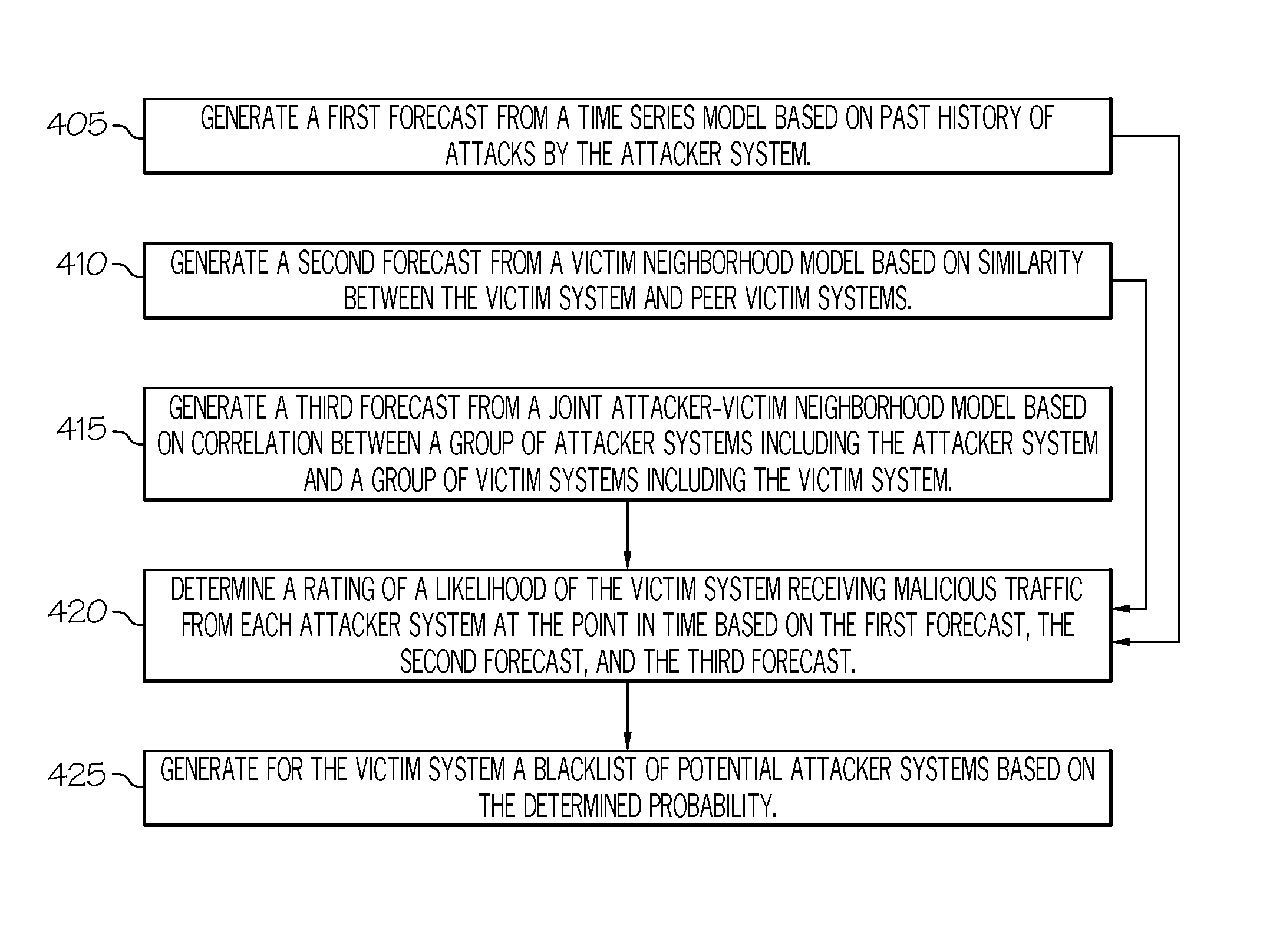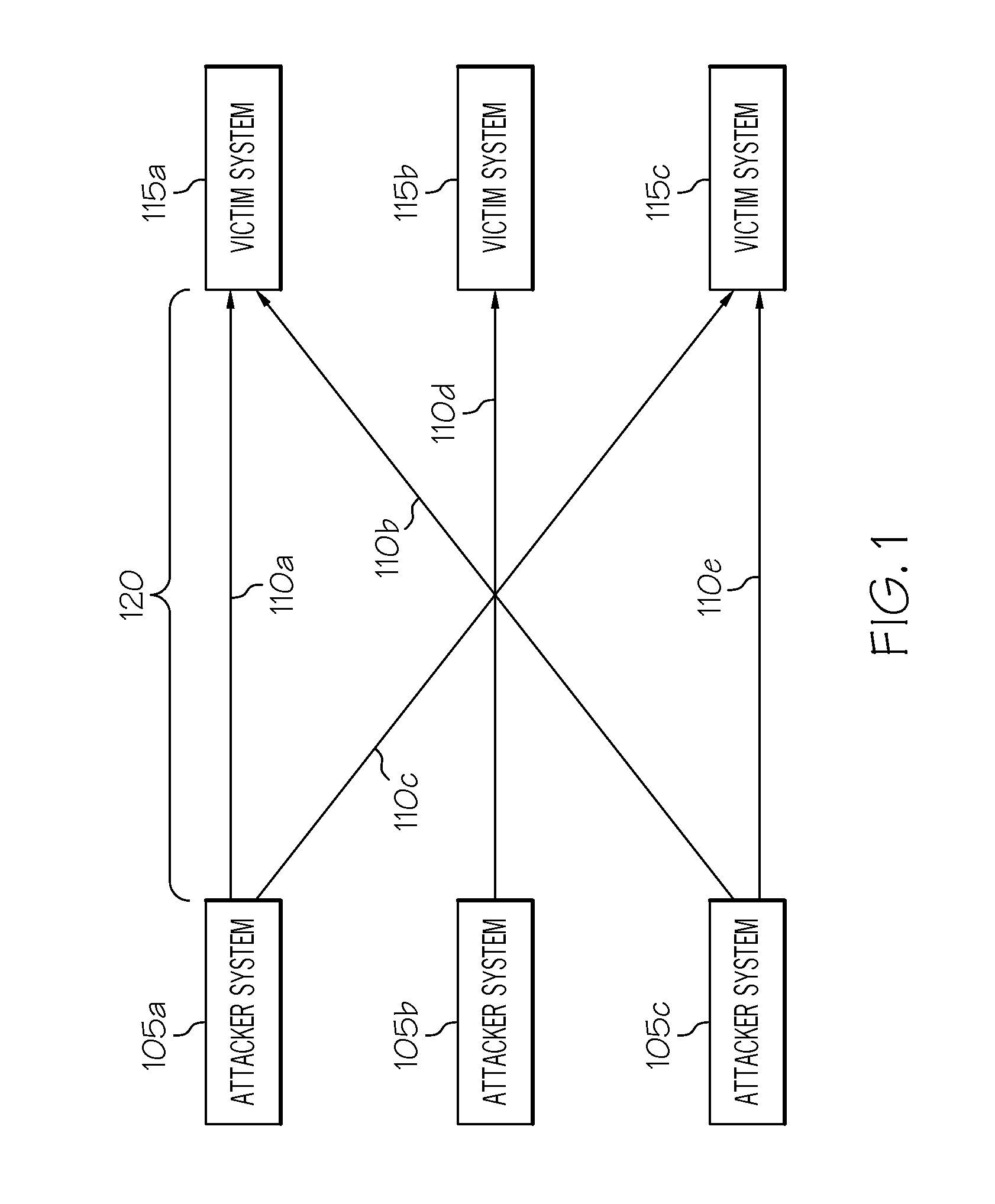Predictive blacklisting using implicit recommendation
a technology of implicit recommendation and blacklisting, applied in the field of computer security, can solve the problems of not relying on the attacker profile, lwols may fail to predict attack sources, and the effect of these security mechanisms is being compromised
- Summary
- Abstract
- Description
- Claims
- Application Information
AI Technical Summary
Benefits of technology
Problems solved by technology
Method used
Image
Examples
Embodiment Construction
[0022]The following detailed description is of the best currently contemplated modes of carrying out exemplary embodiments of the invention. The description is not to be taken in a limiting sense, but is made merely for the purpose of illustrating the general principles of the invention, since the scope of the invention is best defined by the appended claims.
[0023]Various inventive features are described below that can each be used independently of one another or in combination with other features.
[0024]Broadly, embodiments of the present invention generally provide predictive blacklisting against malicious traffic using recommendation by determining a rating of a likelihood of a victim receiving a malicious attack from attacker systems based on a combination of forecasts including a forecast based on a time series model, a forecast based on a victim neighborhood model, and a forecast based on a joint attacker-victim neighborhood model.
[0025]FIG. 1 shows an overview of interactions ...
PUM
 Login to View More
Login to View More Abstract
Description
Claims
Application Information
 Login to View More
Login to View More - R&D
- Intellectual Property
- Life Sciences
- Materials
- Tech Scout
- Unparalleled Data Quality
- Higher Quality Content
- 60% Fewer Hallucinations
Browse by: Latest US Patents, China's latest patents, Technical Efficacy Thesaurus, Application Domain, Technology Topic, Popular Technical Reports.
© 2025 PatSnap. All rights reserved.Legal|Privacy policy|Modern Slavery Act Transparency Statement|Sitemap|About US| Contact US: help@patsnap.com



